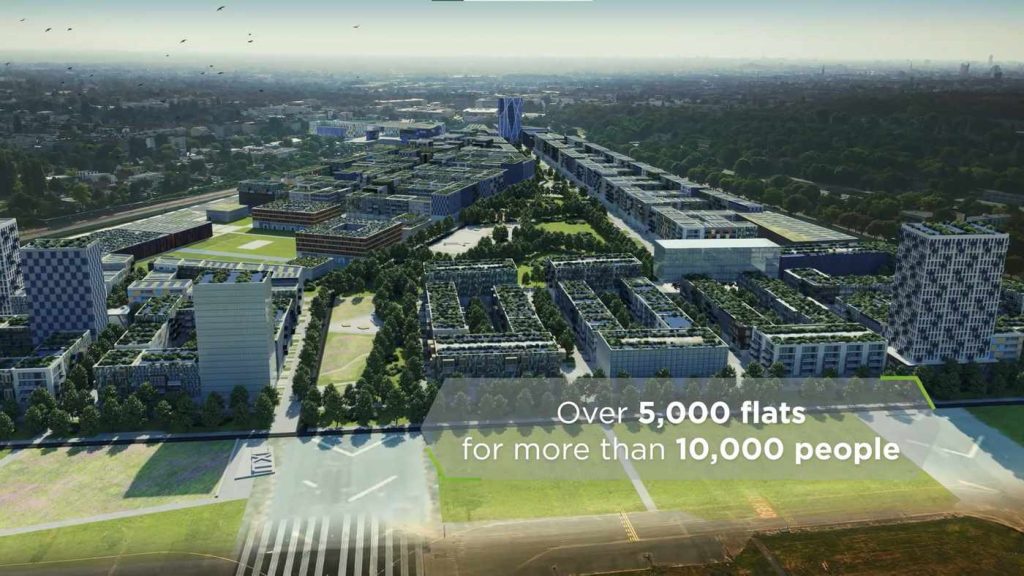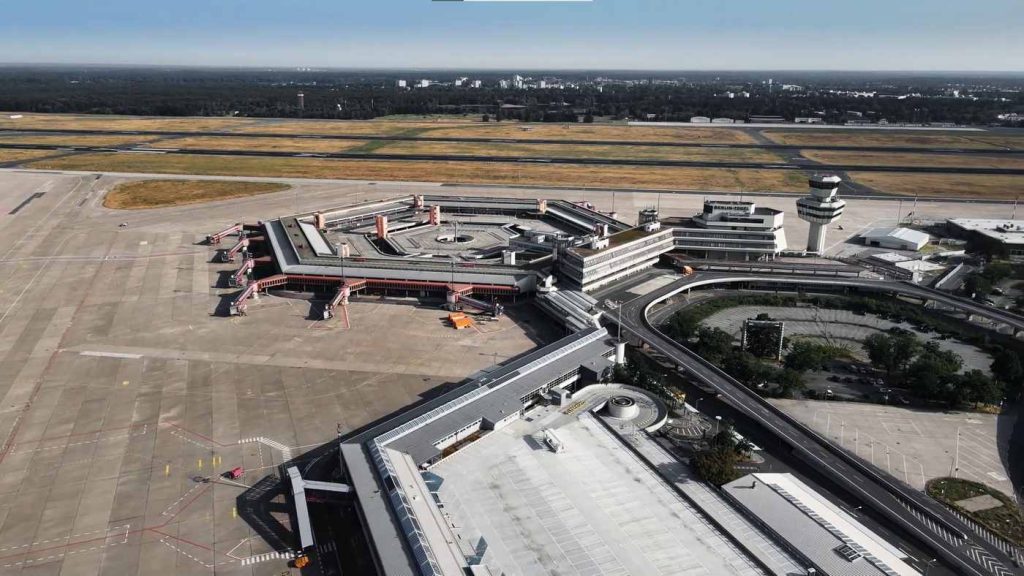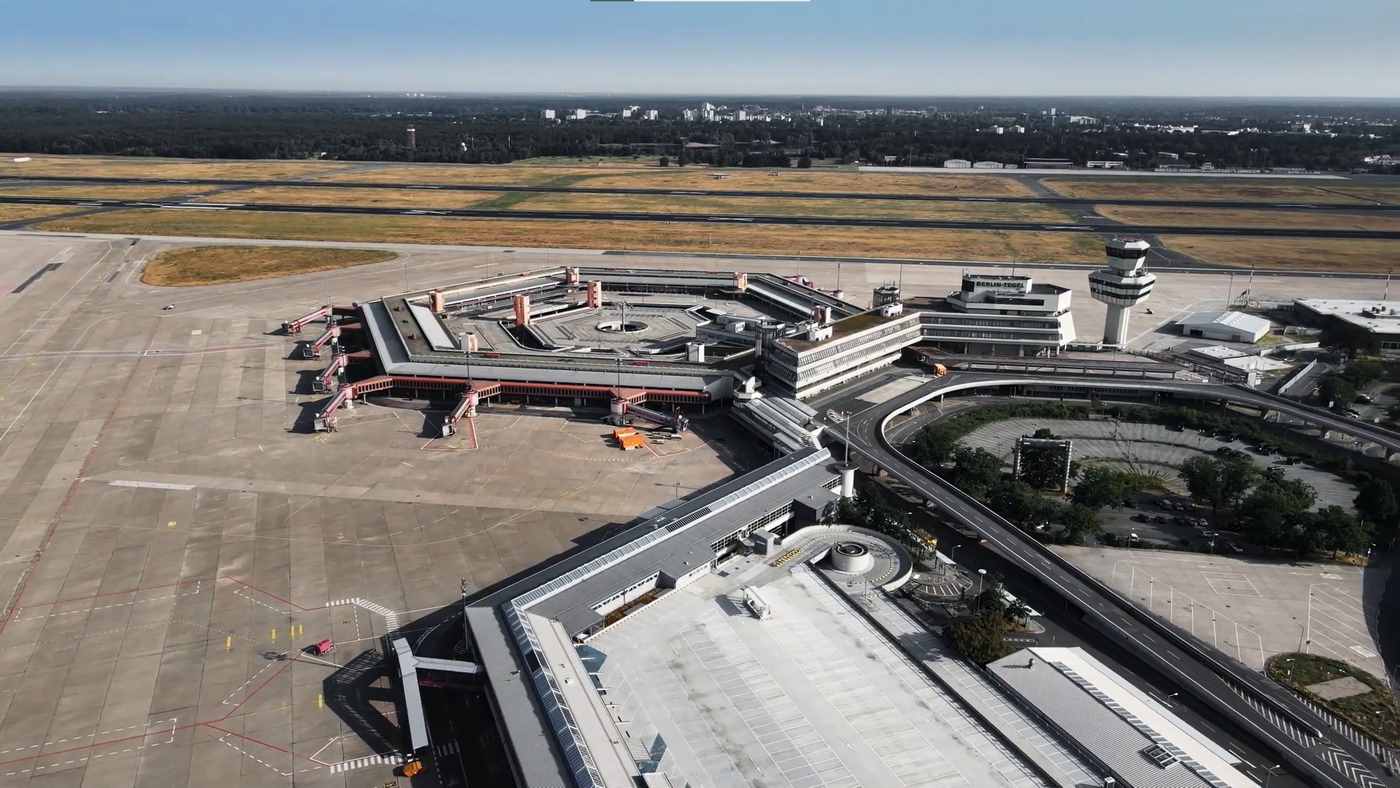
With 580 acres of ex-airport real estate now available, the area is being dreamed of as a sustainable neighborhood of wide open green spaces, bike lanes, and affordable efficient housing.
After old Tegel Airport in Berlin was closed down in favor of a new, more modern one, workers started clearing the ground for the Schumacher Quartier, a project that has been brewing since 2017, and which seeks to address car pollution, housing shortages, and many other modern urban issues.
Schumacher Quartier will provide upwards of 5,000 homes for more than 10,000 people, together with the corresponding amenities such as schools, daycare centers, shopping facilities, and lots of greenery. A further 4,000 homes are planned for the neighboring districts.
The charter for the design incorporates the desires of housing for everyone, urban green space and public areas, an open educational landscape, climate-friendly and water-sensitive urban development, guaranteed environmentally-friendly mobility, and participation from the community members.
SIMILAR: Abandoned Airport Turned into Sensory Experience Park Providing Green Refuge in Crowded Taiwan City
Over the past few years, cities around the world have snapped at the opportunity to turn large derelict spaces into new, innovative, sustainable neighborhoods.
It’s happening in Utah, Kuwait, Taichung, The Bronx, and probably many more locations.

“The Schumacher Quartier is planned in such a way that the streets and squares belong to the people again, rather than to cars,” said Constanze Döll, press secretary for the Tegel Projekt.
“We want to let people rediscover the public space… for socializing, playgrounds, places to relax and talk. Important locations in the neighborhood, like the kindergarten, school, bakery, supermarket, can be reached easily by foot.”
Next to the residential areas will be a commercial zone utilizing some of the old airport’s infrastructure called the Urban Tech Republic, ideal for tech sector entities to set up offices, and a huge city park stretching across 50% of the 5-square-kilometer space.
Another key feature will be the environmental-incorporations into the homes. All will be built from mass-timber construction that’s locally sourced. This should reduce the carbon footprint from construction by 80%. Rooftop gardens will be installed to absorb rainwater, and Fast Company Magazine reports there is to be something called a “sponge city” that will specifically soak up water from heavy rainstorms to be used in Quarter’s water supplies.
RELATED: A New Neighborhood is Being Built in Utah That Looks Like a European ‘One-Car Town’
The city park will be the location of an introduction program for 14 endangered species that are capable of living near urban environs, such as broad-winged bats and nightingale grasshoppers.
The first campus is slated to be finished in 2027, as work is still ongoing to clear existing debris, including an old World War II airfield around which hazardous waste disposal personnel have already cleared 5,000 defunct munitions such as artillery shells.
WATCH their artistic renderings…
Help Your Friends DREAM Of Future Cities Like This On Social Media…




















